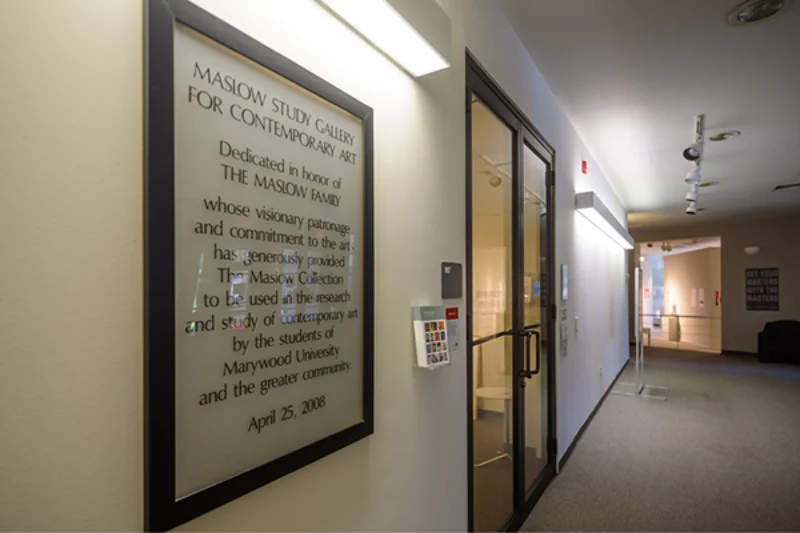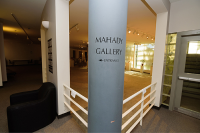
Maslow Study Gallery
Map & Directions
The Maslow Study Gallery is a learning laboratory, providing fieldwork experiences, internships, and opportunities in curatorial and exhibition studies to Marywood students. Works in The Maslow Collection are available for professional research and study, and many are loaned to regional and national exhibitions.
The Maslow Collection is the largest and most comprehensive collection of Contemporary art in Northeastern Pennsylvania, with over 700 works by more than 150 artists. Collected by Marilyn and Richard Maslow and originally housed at InterMetro Industries, it is now on long-term loan to Marywood University.
The largest part of the Collection is devoted to paintings by newly established or emerging artists working or exhibiting in New York during the late 1970s through the early 1990s, such as David Reed, Terry Winters, Nicholas Africano, Robert Cumming, James Biederman, Jack Goldstein, Melissa Meyer, Gary Lang, Anthony Sorce, Edward Henderson, and Katherine Porter, among many others.
The Collection also includes major prints and works on paper by Jasper Johns, Frank Stella, Robert Rauschenberg, James Rosenquist, Roy Lichtenstein, Jim Dine, Robert Longo, Chuck Close, Sherrie Levine, Edward Ruscha, Jane Hammond, Peter Halley, Sol LeWitt, and Andy Warhol, among others; and important photographs by Bernd and Hilla Becher, Barbara Kasten, Lee Friedlander, Sandy Skoglund, and Mark Cohen.
The Maslow Collection has loaned works to major exhibitions at the Whitney Museum of American Art in NYC; The Corcoran Gallery of Art in Washington, DC; the Museum of Contemporary Art, San Diego, CA; P.S.1 Contemporary Art Center, Queens, NY; and the University of the Arts, Philadelphia, PA; among others.
The Collection is, at its core, a learning laboratory that provides exhibitions, dialogue, fieldwork experience, internships, and other opportunities in curatorial studies. Access begins with all Marywood Art Department students, who interact directly with the Collection as an enhancement of their course content (exhibitions are frequently co-curated by faculty members), and extends to Arts Administration students in a more in-depth way, as well as the larger community as a major resource through loans and events.
Take a Virtual Tour of this location
Departments in this Location:
Related Locations

Mahady Art Gallery
The Robert J. and Elizabeth FitzMartin Mahady ...Learn More |Take a Virtual Tour

Suraci Art Gallery
The Suraci Gallery, located on the second floor...Learn More |Take a Virtual Tour

Visual Arts Classrooms
The Shields Center for Visual Arts contains studios...Learn More |Take a Virtual Tour